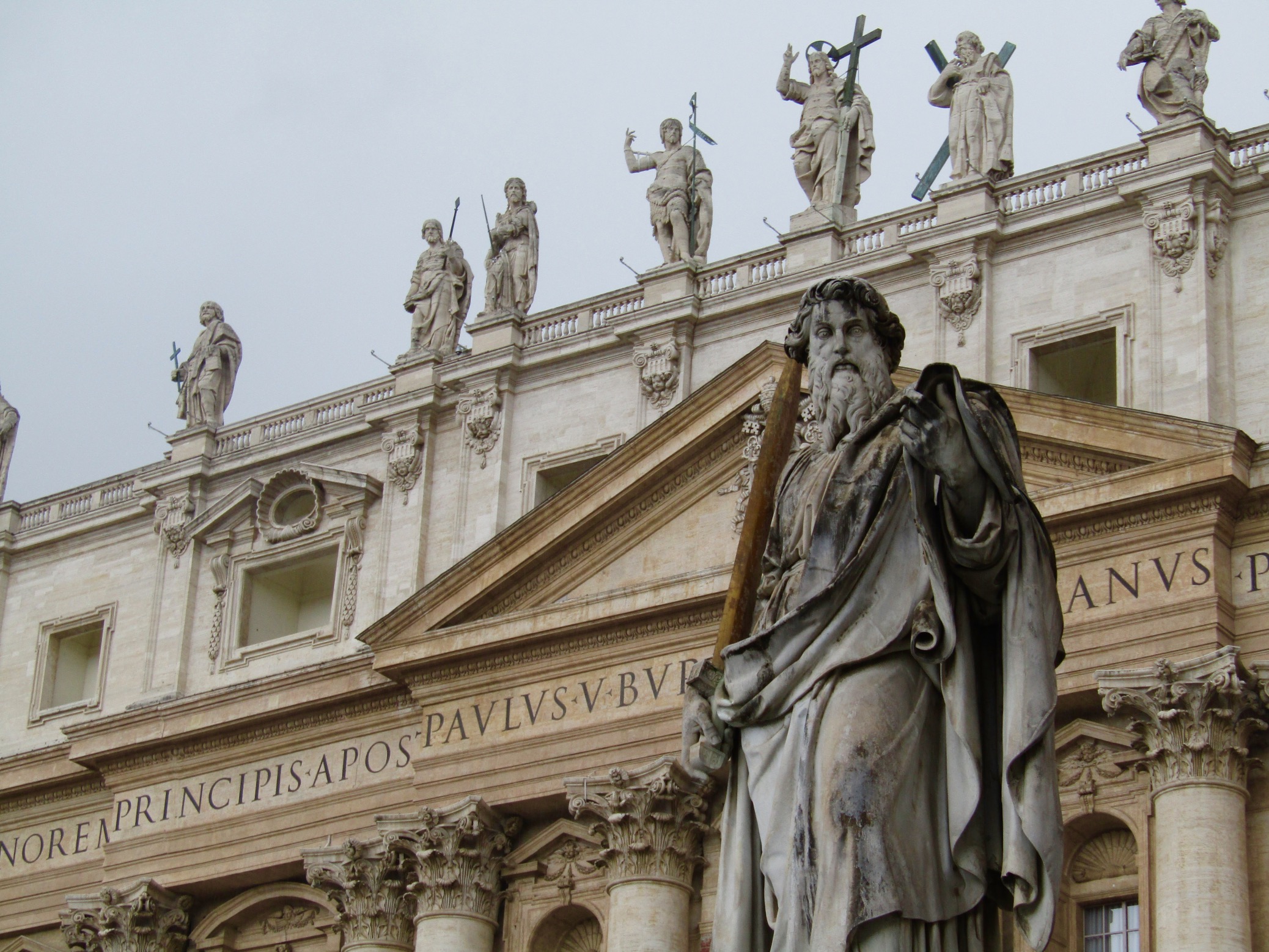There’s a point on a long journey where travel fatigue subsides and changing cities, beds and cuisine becomes the norm. By day 43 of our European adventure, it would have been easy to just find another city, but unfortunately a pair of return tickets to Tokyo were dated for the following day.
We dotted our map with the last things we wanted to see and set out toward Testaccio again. However, we only made it a block before diverting back to Biscottificio Innocenti for another bag of cookies!
With cookies in hand (and mouth), we crossed the Tiber River and headed for the Pyramid of Cestius. After toppling Cleopatra’s Egyptian empire in 30 BC, Romans went crazy for all things Egyptian. The pyramid was built somewhere between between 18-12 BC as a tomb for politician Gaius Cestius. The walls, steeper than those found in Egyptian pyramids, are oft-cited as the source of the disproportioned depictions of pyramids in European art.
Nearby, the shopping-mall-sized Monte Testaccio appears to be nothing more than a tree-covered mound, but its real secret lies underneath. Located near the Tiber River, it was used as a state-run dumping ground for ceramic olive oil jugs during the Roman Empire. Archeologists have dated pieces back to 140-250 AD, but concede the site may have originated two centuries earlier.
From there, we took a bus across town to Vatican City. While we watched the Pope’s Wednesday address and toured the museum on our first visit, we weren’t able to make it inside St. Peter’s Basilica. To visit the world’s largest church, topped by the world’s largest dome, is to witness the opulence of the Holy Roman Empire at its peak.
Designed by Michelangelo and other leading Renaissance artists, the Basilica was built from 1506-1626 and is revered as much for its architecture as it is for its purpose. The regal marble and gold interior, as well as the 96-foot-tall bronze baldacchino canopying the alter were widely criticized at the time for being too over-the-top.
Large and imposing statues of former popes line the inner and outer nave. Just inside the doors, crowds gathered around the basilica’s most famous piece, Michelangelo’s Pietà. The sculpture of Jesus on his mother’s lap after the crucifixion is notable as the only piece the artist ever signed after it was claimed to be the work of another sculptor. Michelangelo’s name can be seen on the sash laying over Mary’s chest.
Heavy rain pummeled the area while we were inside, but finally started to let up as we found a local pizza place for lunch, followed by some unique gelato at Gelateria dei Gracchi. We continued east toward Piazza del Popolo, gateway to the famed gardens of Villa Borghese.
The 200-year-old Piazza del Popolo is still one of Rome’s most popular public squares. Located just inside the old city walls of the Roman Empire, it’s anchored by a piece of Egyptian history. An obelisk of Ramesses II was brought from the ancient Egyptian city of Heliopolis in 10 BC and installed in Circus Maximus, the former chariot racing stadium in the city center. It was moved to its current location as part of Rome’s 16th century urban expansion.
Behind the piazza, a zig-zagging road leads to the top of the Pincian Hill, home to several beautiful gardens, including the Villa Borghese. The sweeping views of the city from the top are absolutely magnificent. The large trees provided great cover for the passing rain showers, which in turn provided amazing light in contrast with the purple skies.
We wanted to cap off our trip with a nice dinner out. At the recommendation of our B&B host, we chose La Botticella in one of Trastevere’s back streets. The small hostaria is run by two sisters and has a homey feel about it.
Another couple entered shortly after us. In typical European fashion—despite the many empty tables—they were seated right next to us. They turned out to be visiting from Montana (not quite Cascadian, but close enough!) and as the wine flowed, we had a great time chatting with them.
However, the food quickly distracted us from the great company. It was one of those meals that should really be eaten in private due to the constant moans of satisfaction. We started with the traditional Roman fried artichoke. The ricotta and porcini ravioli special was delicious, but the spaghetti all’aglio, olio e peperoncino (garlic, olive oil and spicy peppers) had us ready to pack the chef away in our carry-on. We finished the meal with a heavenly strawberry tiramisu.
As we paid our bill, both sisters came to to say farewell. One carried a plastic bag with a bottle of the house red wine in it and handed it to Viktoria as a gift for International Women’s Day. Someday we’ll return to Rome and our first stop will be La Botticella!








More Photo of the Day posts from our January-March 2016 trip to Europe

